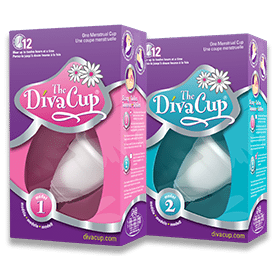Blog
What This Pelvic Floor Therapist Says About Poise and Diva Cups Must be Shared!
While I was at a local birth pro meet and greet recently, I started chatting with Gillian Sim Sukachevin, pelvic floor physical therapist at The Tummy Team, about diva cups, pessaries, prolapse, poise plugging products, and more!

Gillian has contributed her expertise to several workout video routines I’ve put together which are available here on Fit2B. Well, I ended up pulling her into a room, saying I had to record what she was saying, and then Kelly Dean poked her head in to see what we were up to, and basically this video became a funny, candid interview that you simply must watch:
It’s really quite informal and like, “Hey, I’m just having a chat about private bits with a pelvic floor physical therapist here at this party where we’ve snuck into a corner office so we don’t scare anyone…” it has sparked some awesome awareness and “aha” moments, and I’ve been urged to share it publicly here on our blog.
Incontinence products, diva cups, and other insertable products related to the health of our pelvic floor are quietly laughed about, but with so many postpartum, perimenopausal and menopausal women struggling with diastasis recti and core dysfunction, it’s all relatable.
 It’s not about NOT using things but rather about how we use them and remove them and research them. Leaking when you exercise isn’t normal, and it’s nice to have products that let us workout without embarrassment, but we need to get to the “bottom” of the problem, if you catch my drift?
It’s not about NOT using things but rather about how we use them and remove them and research them. Leaking when you exercise isn’t normal, and it’s nice to have products that let us workout without embarrassment, but we need to get to the “bottom” of the problem, if you catch my drift?
It’s about thinking about how our bodies are affected by the product {and how we’ll get it out} before buying and inserting the latest new product to plug the leaks and dam up the holes. Some products can pull at those delicate tissues and make things worse on their way out! And that’s not good!
The huge hope-filled truth is that you don’t need to buy stock in Depends or Poise to stay dry the rest of your life because more non-surgical therapies exist to really treat the deep dysfunction that’s causing your need for those products. Specialists like Gillian exist all over the world, and I encourage you to find one {use this article to find a really good one who’s not a quack who’ll do more damage} and go through core and pelvic floor rehabilitation.
You won’t regret it, and you’ll regain your sense of confidence and function again. Read more of what Gill had to say about the cost of incontinence products here.


Can you share what would be the best way to mitigate the negative effects of removing the Diva Cup? I have noticed odd “pressure” feelings when I wear it and remove it, but it’s made it SO much easier to deal with my heavy flow every month. Is it even an ok product to use if I think I might have a prolapse?
i think its fine to use, but release the suction before pulling it out. so i would like pinch it so it narrows and i can pull it out without it being “sealed” inside. know what i mean?
so, ive actually been using my menstrual cup when i have a bowel movement, but i insert it upside down. so far i havent noticed ANY suction or anything with that, but i figured it was a gentle way to hold things together instead of prolapsing, and it sure makes it easier to go!
Wow what an awesome informative video, I’m in Australia and found this very interesting and relevant well done ladies 👍
You’re welcome! It’s not an easy topic to discuss, but it’s well needed! So many don’t realize…
Hi I’ve just recently become a menstral cup user. About 6 years ago I had prolapse surgery after the birth of my now 9 year old daughter. I’m finding some discomfort in having the menstral cup in and it often feels like it is falling out. Having said this I’m not having any leakage at all. Wondering if you might shed some light on what the issue might be? Was wondering if it might have something to do with the surgery ???Thanks Tarsh
I don’t know about the surgery, but I am a Diva cup user, and I wanted to mention. There was a learning curve for me when I first started using it. When I fail to get the “seal” correctly in place, I can definitely feel the cup moving. This has diminished some as I get more used to inserting it correctly, and as I have improved my pelvic floor and vaginal tone, it has also gotten easier and stayed in place better. Personally, (mild TMI warning, just in case) I wait until I actually feel it “seal” in place before leaving the restroom. For me, there’s a very, very mild “popping” or almost “pinching” (not painful) sensation that tell me I got it. For my personal body shape, it seems easiest to insert while sitting, then stand and, generally, the seal clicks a few seconds after I stand up. Hopefully someone with more knowledge about your surgery can mention if they think your situation warrants something different! I just wanted to let you know that, depending on how recently you’ve come to use the cup, it might just be the learning curve – I know it was for me!
Hi! Sounds like the pelvic floor is not supporting the cup well. This issue can be addressed by a pelvic floor physical therapist.